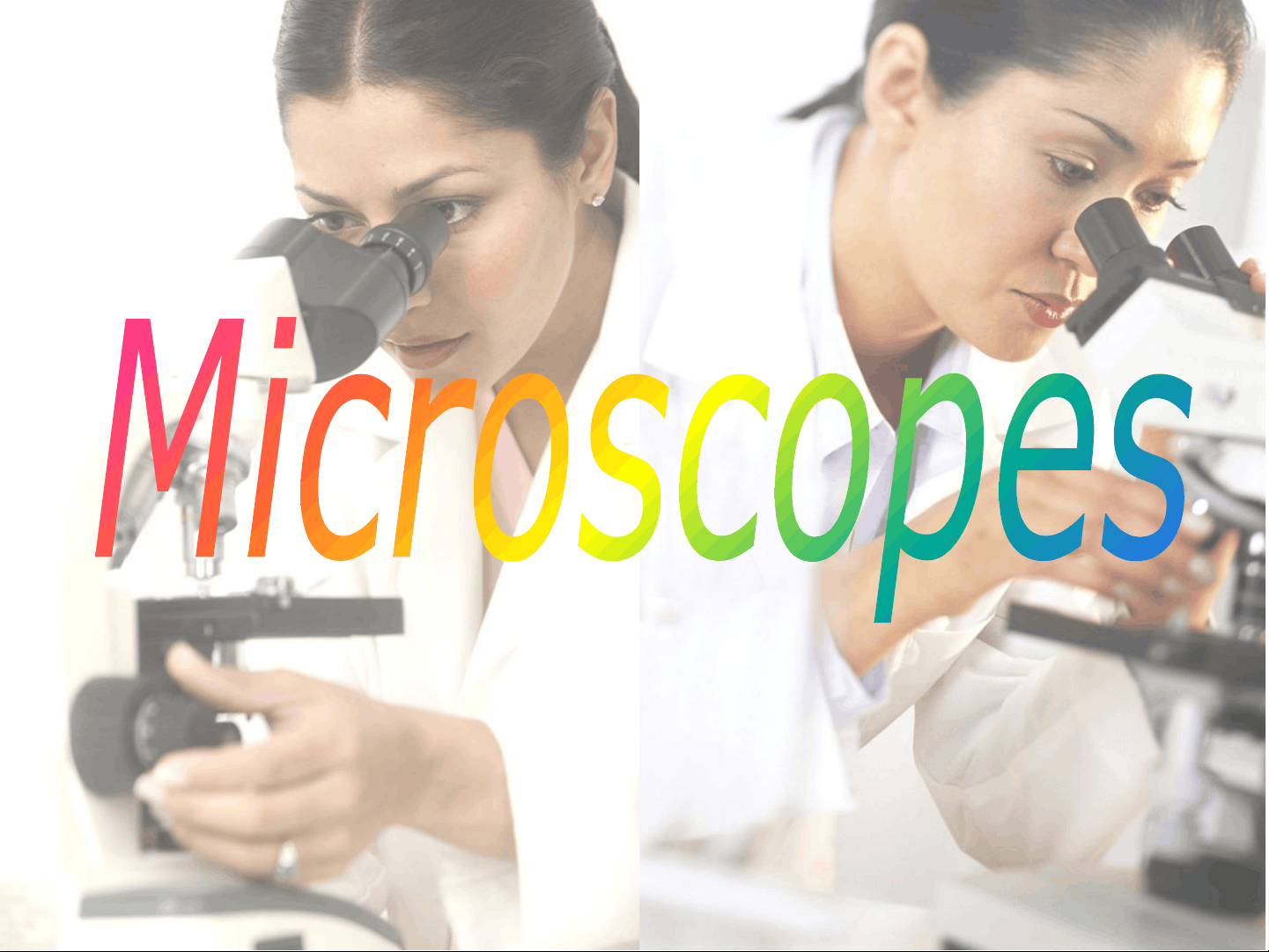
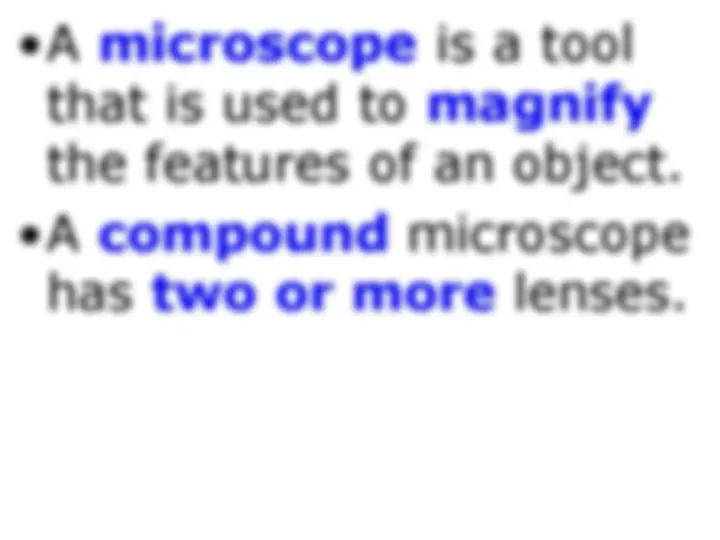
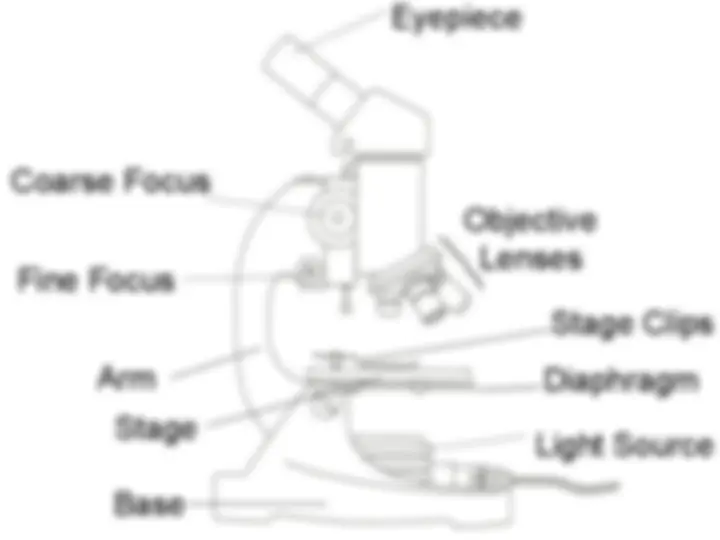
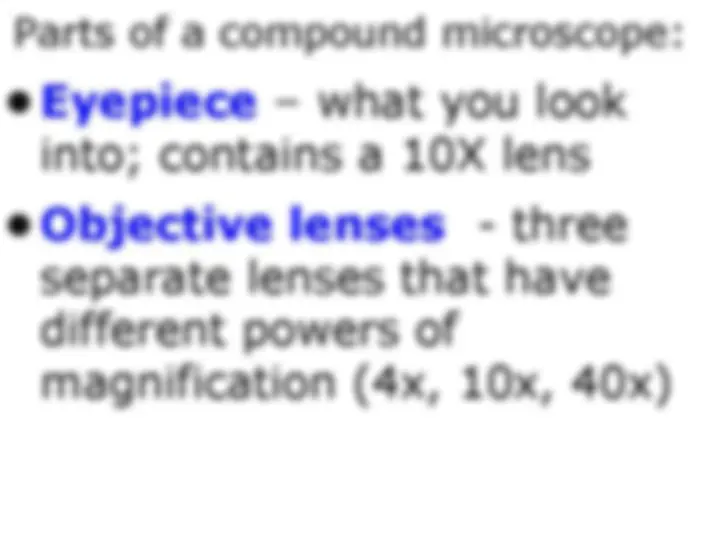
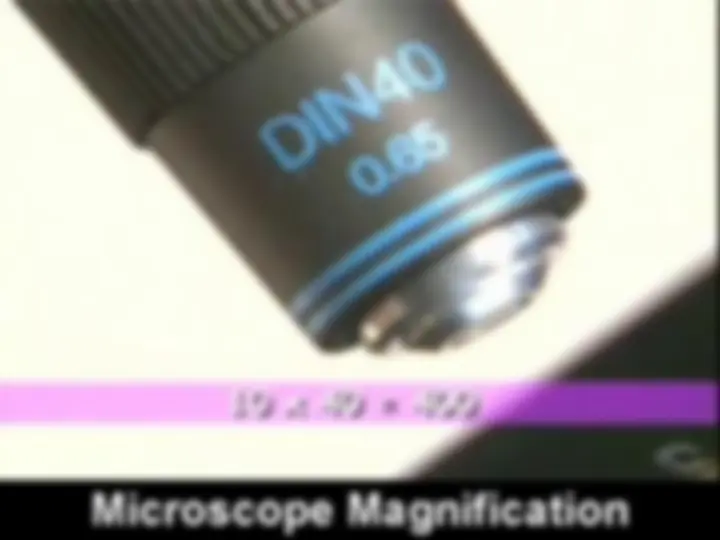
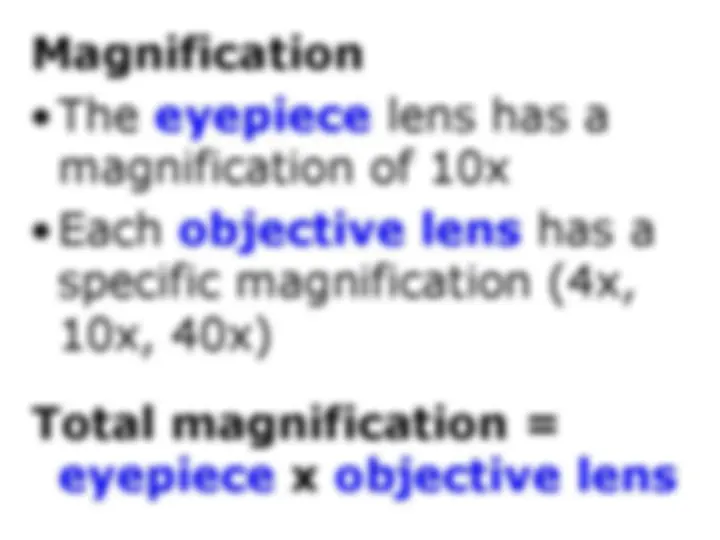
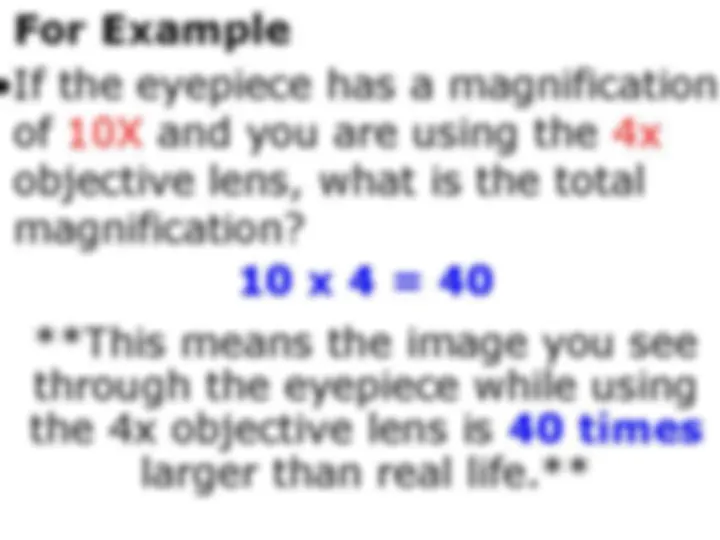
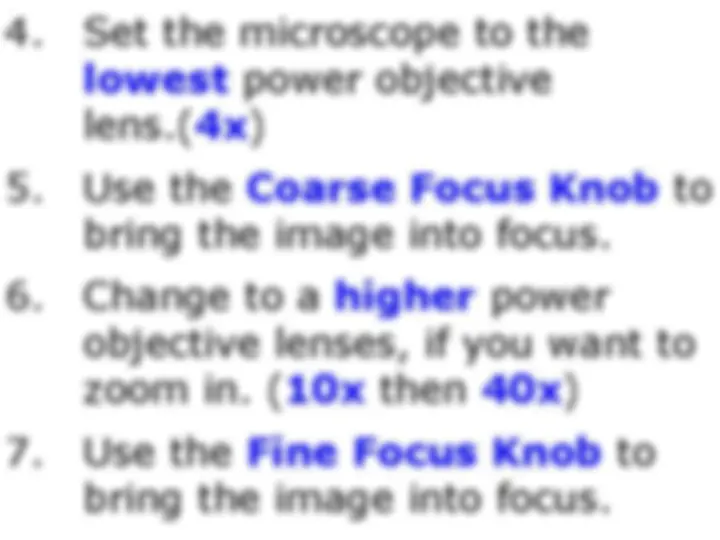
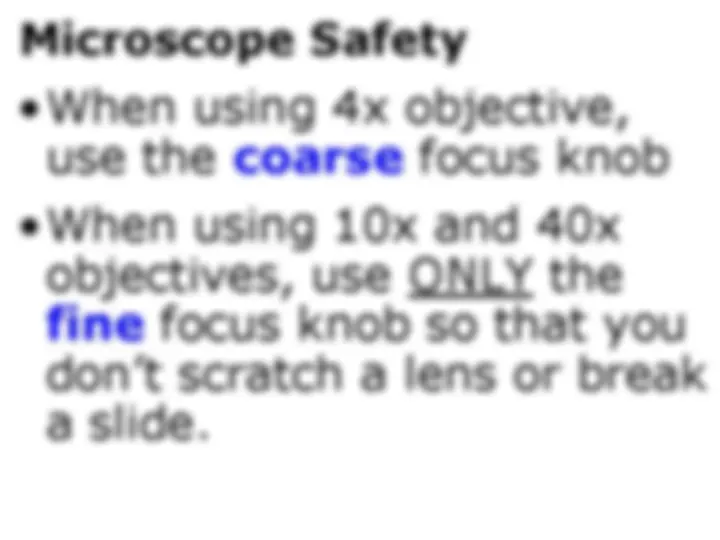
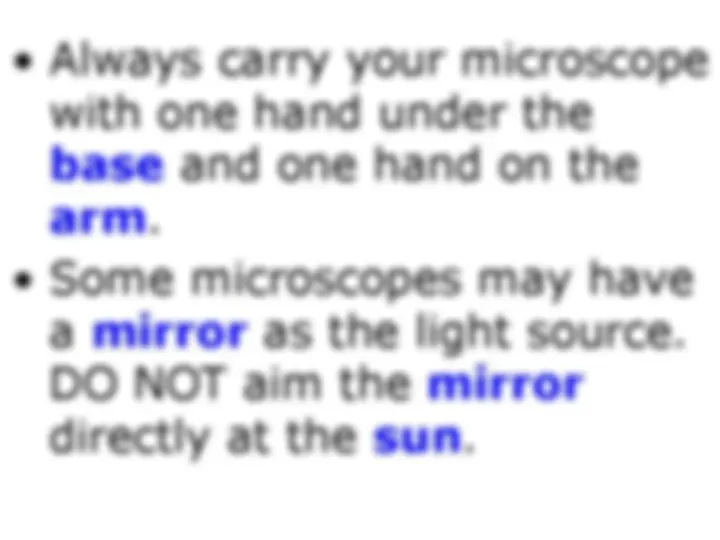


Study with the several resources on Docsity

Earn points by helping other students or get them with a premium plan


Prepare for your exams
Study with the several resources on Docsity

Earn points to download
Earn points by helping other students or get them with a premium plan
Community
Ask the community for help and clear up your study doubts
Discover the best universities in your country according to Docsity users
Free resources
Download our free guides on studying techniques, anxiety management strategies, and thesis advice from Docsity tutors
An illustrated guide to the components of a compound microscope, explaining their functions and how to use them for magnification and focusing. It also covers microscope safety precautions.
What you will learn
Typology: Exams
1 / 15

This page cannot be seen from the preview
Don't miss anything!










Eyepiece
Coarse Focus
Fine Focus
Objective Lenses
Stage Light Source
Stage Clips Arm
Base
Diaphragm
Parts of a compound microscope:
- Eyepiece – what you look into; contains a 10X lens - Objective lenses - three separate lenses that have different powers of magnification (4x, 10x, 40x)
- Light source - shines light through the slide - Diaphragm - controls the amount of light available - Arm – supports the eyepiece & objective lenses - Base – bottom of the microscope
Microscope Magnification
For Example
•If the eyepiece has a magnification of 10X and you are using the 4x objective lens, what is the total magnification? 10 x 4 = 40 This means the image you see through the eyepiece while using the 4x objective lens is 40 times larger than real life.
How to View a
Slide with a
Microscope Video
Microscope Safety